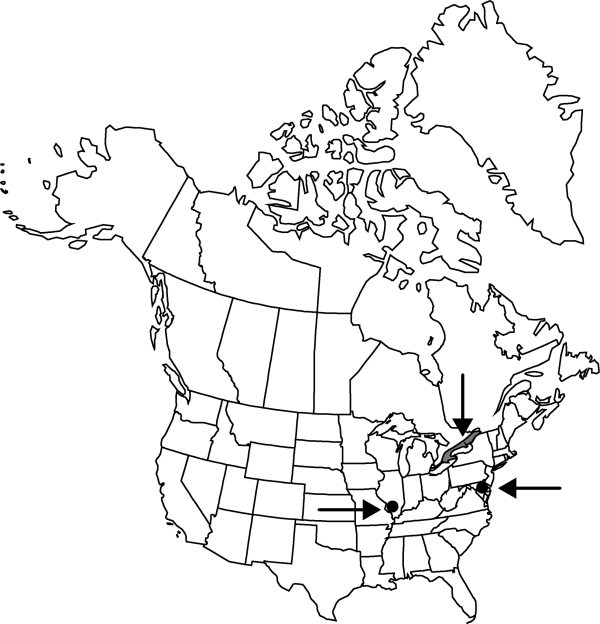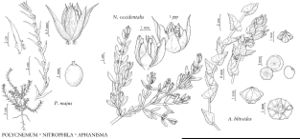Difference between revisions of "Polycnemum majus"
Flora 24: 151. 1841.
IntroducedIllustrated
Treatment appears in FNA Volume 4. Treatment on page 262.
imported>Volume Importer |
imported>Volume Importer |
||
| Line 55: | Line 55: | ||
|publication year=1841 | |publication year=1841 | ||
|special status=Introduced;Illustrated | |special status=Introduced;Illustrated | ||
| − | |source xml=https:// | + | |source xml=https://bitbucket.org/aafc-mbb/fna-data-curation/src/2e0870ddd59836b60bcf96646a41e87ea5a5943a/coarse_grained_fna_xml/V4/V4_475.xml |
|genus=Polycnemum | |genus=Polycnemum | ||
|species=Polycnemum majus | |species=Polycnemum majus | ||
Latest revision as of 21:58, 5 November 2020
Stems procumbent to erect, branches not twisted, 10–30 cm, glabrous. Leaves green to bluish green, (3–)10–25(–20) × 0.5–1 mm, base hyaline, sometimes with sparsely bristled margins, apex stiffly spine-tipped. Bracts ± 3 times perianth length. Bracteoles 1–2 times perianth length. Seeds 1.5–2 mm. 2n = 54.
Phenology: Flowering mid summer.
Habitat: Dry places, such as bare limestone flats
Elevation: 100-300 m
Distribution

Introduced; Ont., Ill., N.Y., Europe.
Discussion
Reports of this species are increasingly rare, perhaps due to loss of habitat.
Selected References
None.
Lower Taxa
None.
